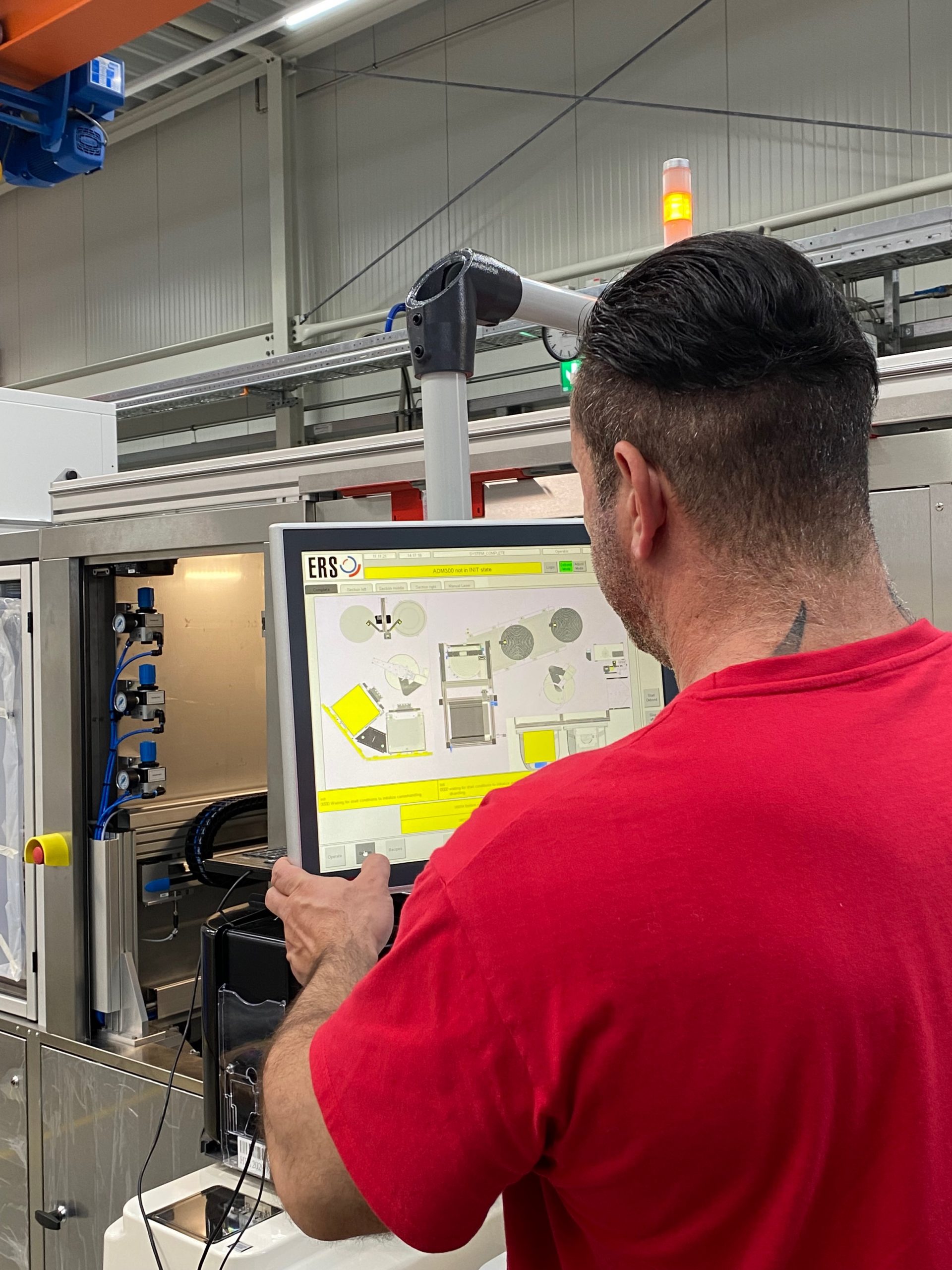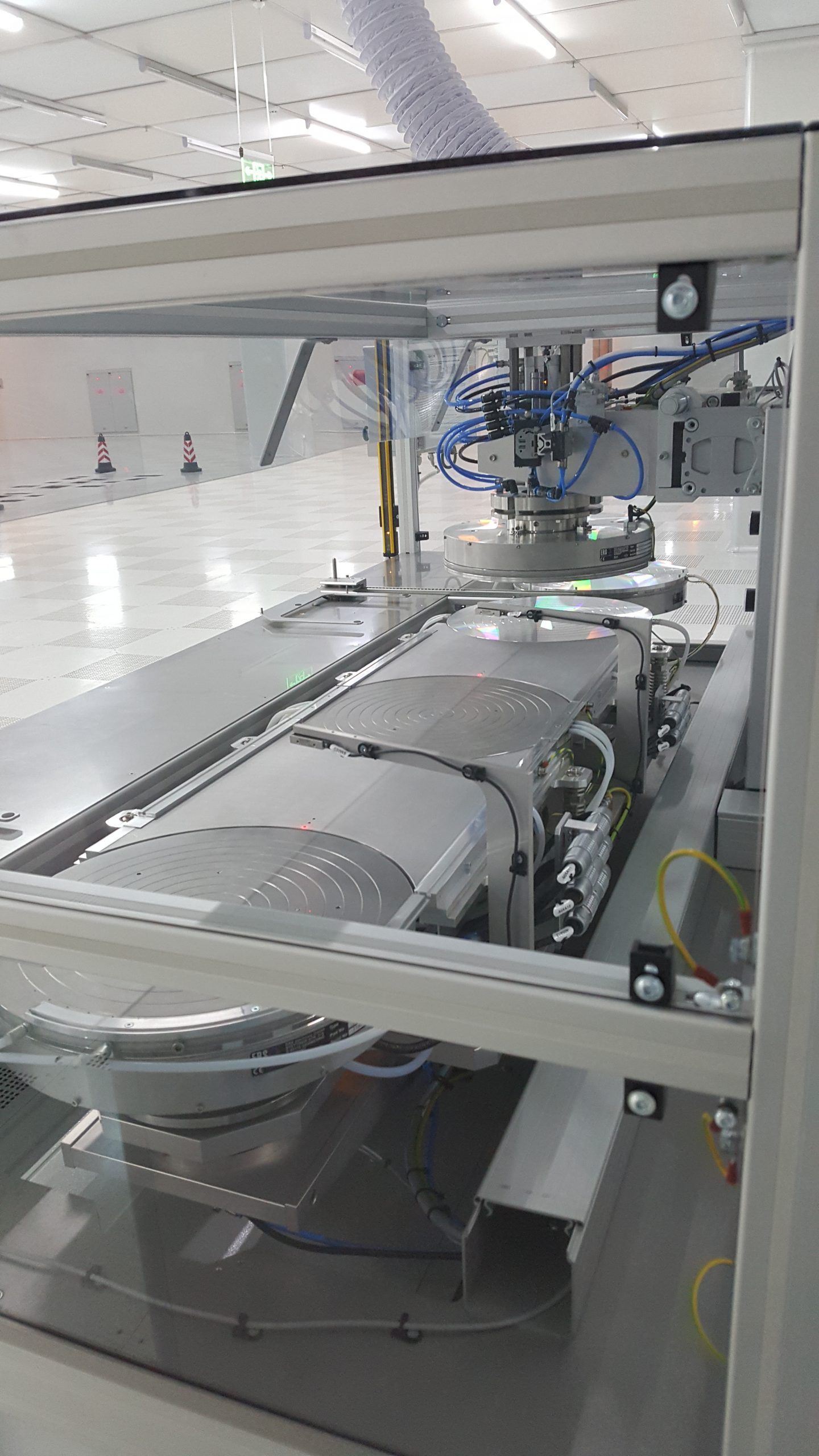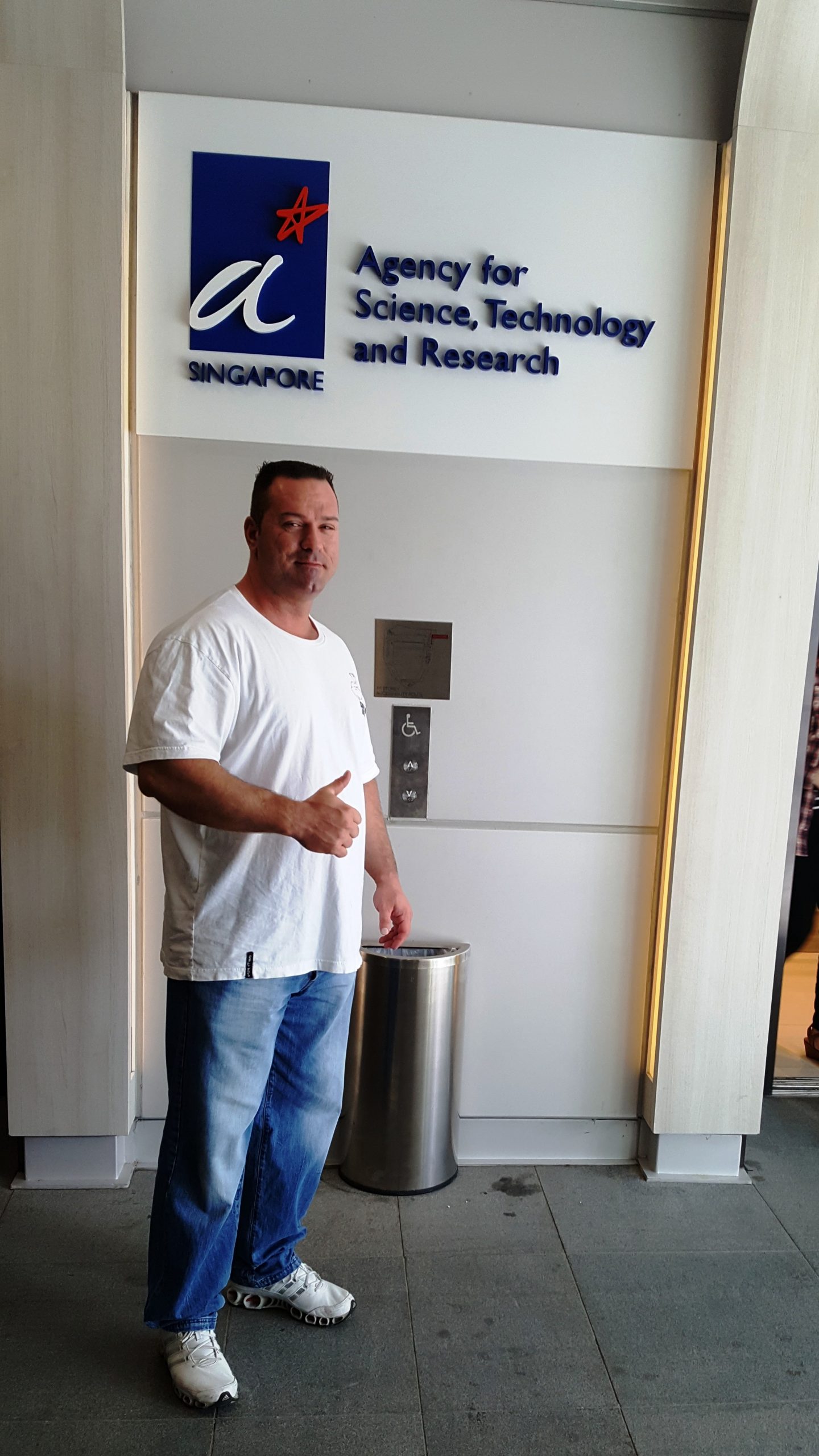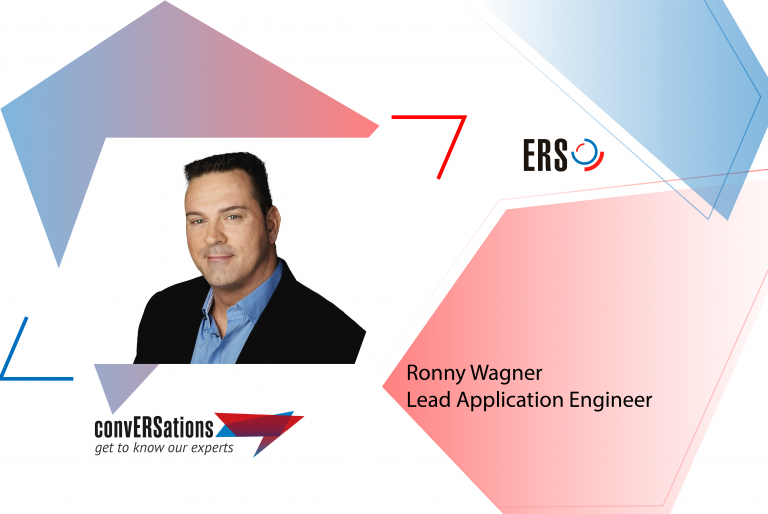Shortly after joining our company in 2007, Ronny was asked to help us develop the first-ever Thermal Debonding station. Over the past almost 15 years he has worked on every Fan-out machine that ERS has developed and has travelled all over the world to install and service the machines at our customers’ sites. We talked to Ronny about his many contributions to the development of our strong Fan-out product portfolio and the challenges and breakthroughs experienced by the team.

Q: You have been working for ERS for almost 15 years, around the time we started developing machines for Fan-out eWLB. How did your career begin at ERS, and how did we get into the business of thermal debonding and warpage adjustment?
Ronny: At the time, ERS had recently opened an office in Dresden and was looking for someone to manage the office and service our customers in the area. I was living in Dresden and thought it sounded like an exciting opportunity, so I applied and got the job. Some months later, I was asked if I wanted to work on a new business venture taken on by ERS, developing a thermal debonding machine for an Advanced Packaging technology called eWLB. The company behind this technology had long been searching for someone to create a solution for debonding and warpage correction, but no one was willing or able to do it. ERS was the only company that took on the challenge. Due to our extensive knowledge in thermal management, we already had the basis for a solution, which led to the making of ERS’s first Manual Debond Machine for 200 mm wafers, called MDM200. In 2008 I traveled with the machine to our first customer and was responsible for putting the MDM200 into operation. Not long after, we finished a prototype of the automatic version of the machine, which was delivered and set up in Singapore and Taiwan in 2009. Being a part of the development of this new technology and working closely with customers and our team in Munich has been a real highlight in my career.
Q: Tell us about the process of developing the automatic Fan-out machines at ERS – from prototype to fully operative at the customer’s site.
Ronny: The MDM200 was relatively simple – the bigger challenges started with the introduction of automation. To go from a manual to a fully automatic process took a lot of effort, both from a software and hardware perspective. Once the prototype was done, I worked at the customer’s site in Regensburg, evaluating and analyzing the machine’s performance; is it fit for purpose, what needs to be rebuilt or improved, what can be developed further? Since the eWLB process was completely new, there were changes and adjustments that we had to make before it became fully operational. I acted as the intermediate between customer and ERS, immersed in the team.

Q: What was the biggest challenge in the beginning? And when did you experience the first breakthrough with the machines?
Ronny: Early in the development process, we realized that the warpage adjustment process in the machine needed to be adapted to the composition of the reconstituted wafer. Depending on the wafer thickness, the mold compound to die ratio, the size and number of the dies, as well as the distance between dies, the wafer has a different reaction to the thermal treatment. This means that we have to create product-specific “recipes” consisting of different parameters to ensure that the warpage is reduced and can be introduced to the next handling process. Creating these recipes is still a challenge today, but since I have worked on them for so long, I often instinctively know how the wafer will react, which makes the job easier.
Although we had already established ourselves in the market with our manual and automatic machines for 200 mm, I would say that our first real breakthrough came with the introduction of the automatic machine for 300 mm, called ADM300, in 2009. Again, I traveled with the machine to the customer site, this time in Portugal, and managed the development process, working remotely with the ERS team to solve issues, suggest improvements, and make hardware and software adjustments.
The next breakthrough came with the ADM330, which was first built in 2016. A customer came to us and wanted to optimize the number of packages per wafer, a challenge that we gladly accepted. Although the transition from 300 to 330 may seem small at first glance, the ADM330 was on another level. It provided the ultimate package for our customers and is today our flagship thermal debonding and warpage adjustment machine.

Q: You also played an essential role in installing the ADM330 at the Institute of Microelectronics in Singapore, where it can be viewed and tested. What kind of responses and reactions have we received from visitors? And what feedback do we get from our customers?
Ronny: After finishing the ADM330 in 2016, I traveled with the machine to deliver it to our customer, the IME A*STAR, a highly regarded Advanced Packaging research institute in Singapore. I spent about one year there, where I helped complete several tests and researched the behavior and properties of different types of mold compounds. This is a designated test machine that is available to anyone who wants a demonstration of its capabilities. As far as I know, the customers that have seen the machine have been very impressed, especially by the patented contactless transport system. Because of this contactless transport, we can handle thin wafers better than any other company. This is one of the unique selling points of this machine. We also provide customer-specific modifications to the machines; hardware and software, and machine upgrades. We even offer to do these changes on location after delivery of the machine, which is very valued by our customers.
Q: How do you see the market for Fan-out Advanced Packaging developing in Asia? What should ERS do to stay competitive?
Ronny: The market for Advanced Packaging is growing at a very fast pace, especially in Asia, so with our know-how and technology in this field, I see a lot of potential for ERS to grow its FoWLP product line there. To achieve that, we need to continue expanding our local team in China. On the technical side, we see that the wafers are getting thinner. When I started working in the industry, the typical thickness was 930µm. Today, they are down to 350µm. Our machines can still handle this thickness, but we are slowly approaching our limits. We definitely need to continue researching other solutions for wafers as they get thinner. In this respect, our cooperation with research institutes like IME Singapore and Fraunhofer IZM is essential.
Also worth mentioning is our Fan-out equipment for panels. We introduced the Manual Panel Debond Machine (MPDM) in 2018, which was very well received by research and development and New Product Introduction teams, including the Fraunhofer IZM. We are finalizing the automatic version of the machine, which will enable high-volume manufacturing on large panel format. Our investment in this format will also help sustain our competitiveness going forward.

